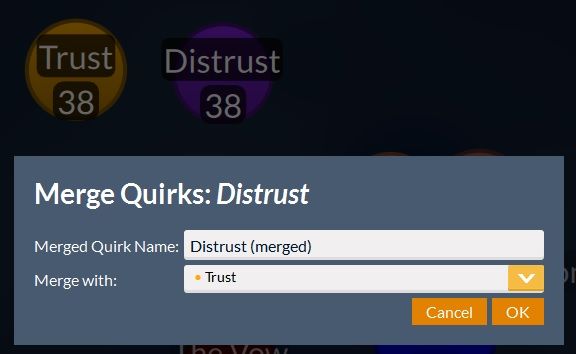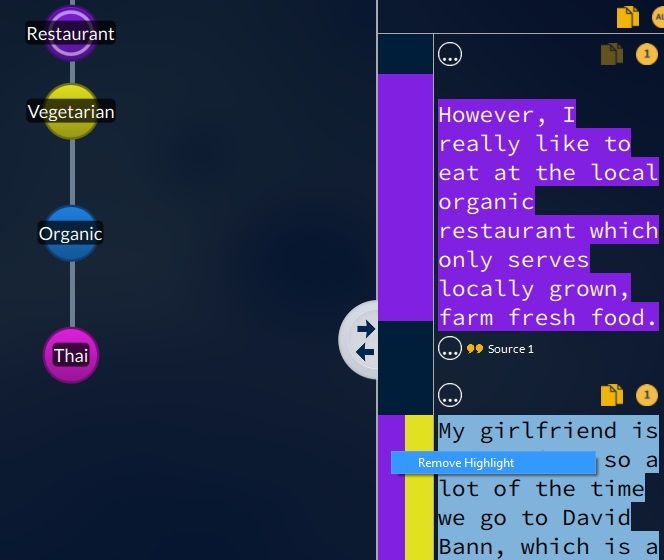Merging and splitting themes in qualitative analysis
To merge or to split qualitative codes, that is the question… One of the most asked questions when designing a qualitative coding structure is ‘How many codes should I have?’. It’s easy to start out a project thinking that just a few themes will cover the research questions

To merge or to split qualitative codes, that is the question…
One of the most asked questions when designing a qualitative coding structure is ‘How many codes should I have?’. It’s easy to start out a project thinking that just a few themes will cover the research questions, but sooner or later qualitative analysis tends towards ballooning thematic structure, and before you’ve even started you might have a framework with dozens of codes. And while going through and analysing the data, you might end up with another couple dozen more. So it’s quite common for researchers to end up with more than a hundred codes (or sometimes hundreds)!
This can be alarming for students doing qualitative analysis for the first time, but I would argue it’s fine in most situations. While it can be confusing and disorienting if you are using paper and highlighters, when using CAQDAS software a large number of themes can be quite manageable. However, this itself can be a problem, since qualitative software makes it almost too easy to create an unwieldy number of codes. While some restraint is always advisable, when I am running workshops I usually advise new coders not to worry, since with the software it is easier to merge codes later, than split them apart.
I’m going to use the example of Quirkos here, but the same principal applies to any qualitative data analysis package. When you are going through and analysing your qualitative text sources, reading and coding them is the most time consuming part. If you create a new code for a theme half way through coding your data because you can see it is becoming important, you will have to go back to the beginning and read through the already coded sources to make sure you have complete coverage. That’s why it’s normally easier to think through codes before starting a code/read through.
Of course there is some methodological variance here: if you are doing certain types of grounded theory this may not apply as you will want to create themes on the fly. It’s also worth noting that good qualitative coding is an iterative process, and you should expect to go through the data several times anyway. Usually each time you do this you will look at the code structure in a different way – maybe creating a more higher-level, theory driven coding framework on each pass.
However, there is another way that QDA software helps you manage your qualitative themes: since it is simple to merge smaller codes together under a more general heading. In Quirkos, just right click on the code bubble you want to keep, and you will see the dialogue below:

Then select from the drop down list of other themes in your project which topic you want to merge into the Quirk you selected first. That’s it! All the coded text in the second bubble will get added to the first one, and it will keep the name of that code, appended with “(merged)” so you can identify it.
Since it is so easy to merge topics in qualitative software, I generally suggest that people aren’t afraid to create a large number of very specific topics, knowing they can merge them together later. For example, if you are create a code for when people are talking about eating out at a restaurant, why not start with separate codes for Fast food, Mexican, Chinese, Haute cuisine etc - since you can always merge them later under the generic ‘Restaurant’ theme if you decide you don’t need that much detail.
It is also possible to retroactively split broad codes into smaller categories, but this is a much more engaged process. To do this in Quirkos, I would start by taking the code you want to expand (say Restaurant) and make sure it is a top level code – in other words is not a subcategory of another code. Then, create the codes you want to break out (for example Thai, Vegetarian, Organic) and make them sub categories of the main node. Then, double click on the top Quirk, and you will get a list of all the text coded to the top node (Restaurant). From this view in Quirkos, you can drag and drop each code into the relevant subcategory (eg Organic, Thai):

Once you have gone through and recoded all the quotes into new codes, you can either delete the quotes from the top level code (Restaurant) one by one (by right clicking on the highlight stripe), or remove all quotes from that node by deleting the top-node entirely. If you still want to have a Restaurant Quirk at the top to contain the sub categories, just recreate it, and add the sub-categories to it. That way you will have a blank ‘Restaurant’ theme to keep the subcategories (Thai, Organic) together.
So to summarise, don’t be afraid to have too many codes in CAQDAS software – use the flexibility it gives you to experiment. While there is always too much of a good thing, the software will help you see all the coding options at once, so you can decide the best place to categorise each quote. With the ability to merge, and even split apart codes with a little effort, it’s always possible to adjust your coding framework later – in fact you should anticipate the need to do this as you refine your interpretations. You can also save your project at one stage of the coding, and go back to that point if you need to revert to an earlier state to try a different approach. For more information about large or small coding strategies, this blog post article goes into more depth.
If you want to see how this works in Quirkos, just download the free trial and try for yourself. Quirkos makes operations like merge and split really easy, and the software is designed to be intuitive, visual and colourful. So give it a try, and always contact us if you have any questions or suggestions on how we can make common operations like this quicker and simpler!
